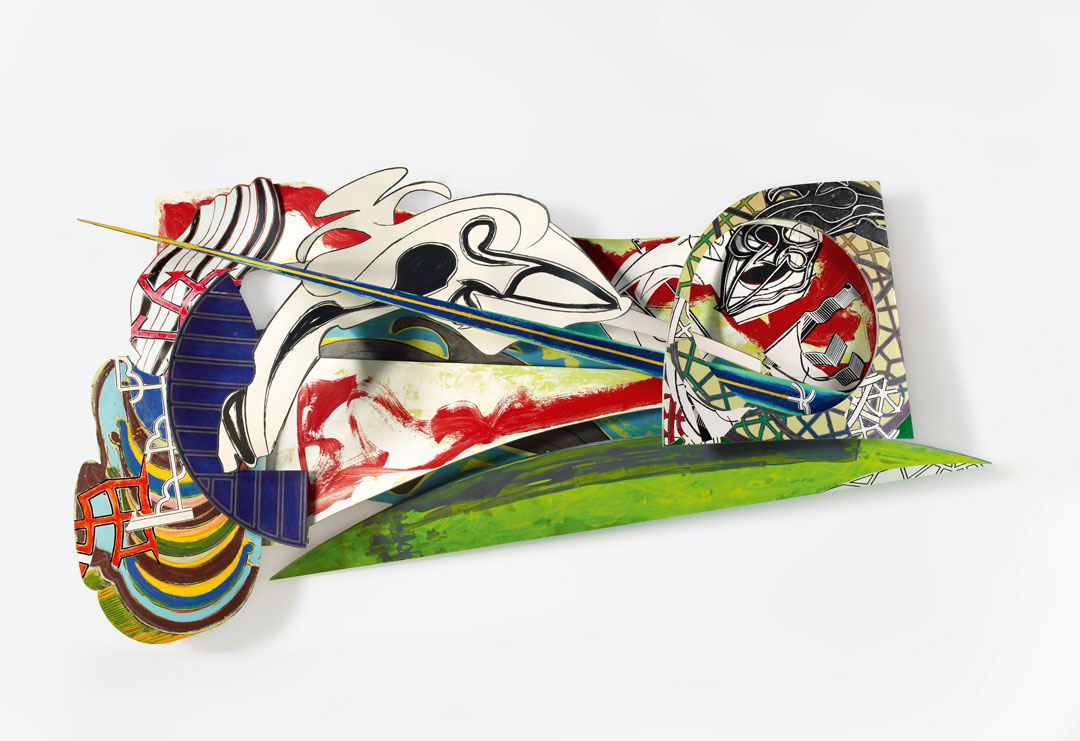
The Chase – Second Day, 1989
Frank Stella
| Medium: | Clear lacquer and varnish on etched magnesium plate and aluminium |
| Dimensions: | 290 x 555 x 135 cm |
about the work
After completing his studies of history and history of art at Princeton University in New Jersey from 1954 to 1958 and several painting courses, the young Frank Stella moved to New York, where he still lives and works today. Here he met among others various art critics such as Clement Greenberg and artists such as Jasper Johns and Robert Rauschenberg. In 1959, Stella took part in the Sixteen Americans exhibition at the Museum of Modern Art, whereupon the museum purchased one of his works. In 1960, his first solo exhibition was held at the Leo Castelli Gallery in New York. This was followed by numerous participations in group exhibitions such as American Abstract Expressionists and Imagists at the Guggenheim Museum in New York in 1961, Post Painterly Abstraction at the Los Angeles County Museum of Art in 1964 and American Art Since 1945 at the Museum of Modern Art in New York in 1975. In 1964, he was also represented at the Venice Biennale and in Kassel he took part in Documenta 4 in 1968 and Documenta 6 in 1977. In 2016, the Whitney Museum of American Art in New York dedicated an extensive retrospective to the artist. In addition, Stella has received numerous awards and honorary degrees from American and international institutions, including Harvard University, Friedrich Schiller University in Jena and the Bezalel Academy of Arts and Design in Jerusalem. In 1983, he advanced his theoretical arguments about the spatial development of abstract art in his publication Working Space.
Stella’s œuvre takes its cue from abstract expressionism. His early contact with Jasper Johns and his Flag and Target series inspired him greatly. As the 1960s dawned, Stella turned from initially gestural painting towards a minimalist, conceptual style of painting. He began to experiment with what he referred to as “shaped canvases”, in order to transcend the classic rectangular shape of pictures. In the early 1970s, he developed three-dimensional works, which still hang on the wall but seem to outgrow it and reach into the surrounding space. The Brazilian Paintings and Exotic Birds series testify to a greater variety of colours and open up a new materiality with pervasive aluminium reliefs.
From 1986, Stella dealt intensively with the 1851 novel Moby DIck by Herman Melville. In his almost 15-year involvement with the story of Captain Ahab’s hunt for the white whale Moby Dick, he created the same number of aluminium reliefs for the 135 chapters. The Reinhard Ernst Collection features several works from this series, including The Chase – Second Day. The large format aluminium relief clearly reveals some details of the whale hunt, such as the harpoon drilling its way right across the relief on a blue background. The entire structure of the artwork appears opaque – similar to a hunting scene on the raging sea. Frank Stella’s sculptural works will be honoured with a special presentation at the Reinhard Ernst Museum.